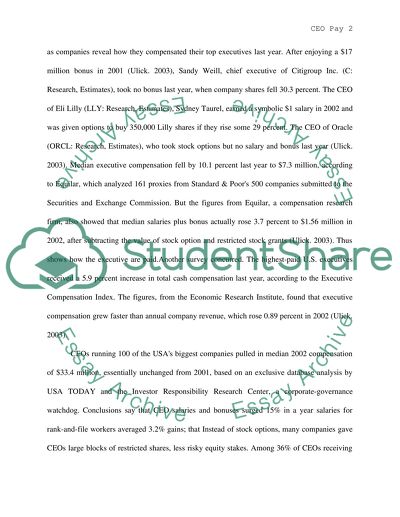Cite this document
(“CEO Pay Essay Example | Topics and Well Written Essays - 1000 words”, n.d.)
CEO Pay Essay Example | Topics and Well Written Essays - 1000 words. Retrieved from https://studentshare.org/miscellaneous/1508046-ceo-pay
CEO Pay Essay Example | Topics and Well Written Essays - 1000 words. Retrieved from https://studentshare.org/miscellaneous/1508046-ceo-pay
(CEO Pay Essay Example | Topics and Well Written Essays - 1000 Words)
CEO Pay Essay Example | Topics and Well Written Essays - 1000 Words. https://studentshare.org/miscellaneous/1508046-ceo-pay.
CEO Pay Essay Example | Topics and Well Written Essays - 1000 Words. https://studentshare.org/miscellaneous/1508046-ceo-pay.
“CEO Pay Essay Example | Topics and Well Written Essays - 1000 Words”, n.d. https://studentshare.org/miscellaneous/1508046-ceo-pay.


